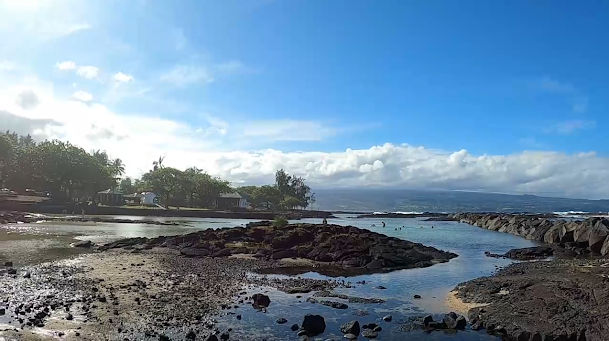Usually, there are other people at the office on Saturdays, but my car was the only one in the parking lot this time (it hasn't been this clean in a long time, so I took a picture to savor the moment).
The yard outside the office makes it difficult to go inside and work.
The part of the building where I spend most of my time, when I'm not running back and forth to the printer on the other side of the office. The server room is on the right, with my office down the hall.
The server room...
My desk...
Today, I was tasked with converting the two web servers and their domain controller into virtual machines. This can be a difficult and time consuming process, but I've done it many times now and have it nailed down pretty well. In this case, I prepared a dedicated server which will run (free licensing) VMWare Server and host the virtual machines, instead of using one of our existing VMWare servers. This is a Dell Poweredge 2950 that we had originally purchased for use as a new accounting server, but the upgrade of our accounting systems was a project that got pushed back until February of 2008, so it was okay for me to take this system temporarily. It has has a Dual-Core Xeon and 3.5GB of RAM, as well as four hot-swappable 73GB SATA hard drives (foam emanating from mouth).
In case anyone who reads this is ever interested in moving a physical computer into a virtual environment, here's the steps that I take to do it- it works like a champ every time:
1. On the source machine that you want to convert, install the VMWare SCSI adapter driver by using the "Add New Hardware" applet under the control panel (if this were a Linux box, I've found that you can sometimes skip this step and install the driver after you've cloned the machine, but it's usually a good idea to install it beforehand).
2. Create a new Virtual Machine on your VMWare Server. Make sure that you create a large enough .vmdk (VMWare Hard Drive) to facilitate the source disk. You will also want to create extra disks if you have more than one that you wish to bring over.
3. Use a bootable .ISO image to boot the VM for the first time. The image should have a version of Norton Ghost that includes the TCP/IP Ghosting option. Note that while you boot the machine, you'll need to supply the VMWare SCSI adapter drive so that the drives will be recognized. I normally use a customized version of Bart PE to boot the system, and give it the driver when it boots up, although you could also include the driver when you create the Bart PE .ISO image.
4. Use a bootable CD to boot the source machine. Run Norton Ghost and clone the drives over TCP/IP.
5. Once that is done, you should be able to reboot your VM and be able to your converted system!
This is a great way to consolidate your hardware, and it also makes for a very simple disaster recovery plan of your server (you can run a batch file that copies the .vmdk files off to another machine as often as you wish).



1 comment:
Damn yo looks like your having to much fun at work. Fun at work is never a good thing unless it's having your own fun on company time.
Post a Comment